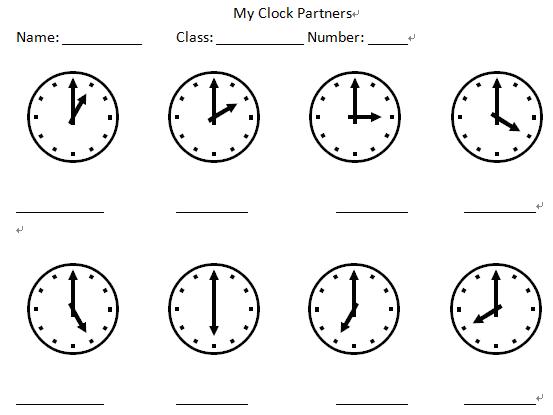An informative article introducing how differentiated instruction could be operationalized in English teaching !
英語差異化教學—選擇版的應用
2017/1/4 分類:大師開講 作者:簡靜雯 點閱次數:2444
英文老師在課堂上必須面對學生因為文化、經濟、教育等因素,導致英語程度不一。有些學生無法完整聽說讀寫 26 個字母,但有的學生已經可以閱讀簡單的英文讀本甚至小說。英文老師面對班上的雙峰現象,勢必要在教學方法上有所調整。
有些老師選擇採用講述方式上課,但對於需要實際操作才能習得的學生而言,講述法無法讓他們理解老師的教學內容。除此之外,若老師多採用全班性的教學方式,所有的練習都是老師對著全班,大家一起唸出課文、字彙或對話,不會的學生只要假裝張開嘴巴,老師更是無法確定每位學生是否都能夠讀出課文、字彙或對話。
沒有一種教學法或教學方法可以套用於所有的學生,因此成功的老師清楚知道,學生的差異會影響學習,應該盡力去創造教室環境來尊重學生個別的差異。因此實施差異化教學,可以滿足不同學生的需求。
【內容、過程和成果的差異化】
差異化教學指的是教師竭盡所能回應教室內學生的差異。根據學生的準備度、興趣和學習歷程,教師可以至少在這三方面進行差異化,包括內容、過程和成果 (Tomlinson, 1999)。
1.「內容」,也就是教什麼內容:首先老師必須先確定每個單元主要的教學內容和目標為何 (Blaz, 2013)?針對教學內容和目標來選取合適的教學媒材,除了課本之外,老師可以針對學生程度提供不同程度的文本內容、文本形式(紙本或電子檔)或文本種類(如報紙、繪本、童詩)。
2.「過程」,也就是如何教:過程差異化指的是教師進行教學時的方式不同,老師在教學時可以有全班、分組、兩兩或個人練習的不同模式 (Blaz, 2013)。老師可以針對全班進行講解;或是將全班分兩組,一邊扮演 A,另一邊扮演 B,練習對話。老師可以設計活動讓學生進行小組討論或練習,再點每組的某一位學生起來回答。而兩兩配對的活動,可以由第一個人指讀,第二個人聽第一個人讀的內容,然後角色互換。最後還可以設計個人的學習活動,例如寫習作、學習單等等。過程差異化亦可指老師用不同方式讓學生了解教學的內容。以字彙教學為例,字卡和圖卡可能無法完全讓學生理解字彙的意思,老師可以採用動作、舉例、母語、情境描述等等來幫助學生習得字彙。
3.「成果」,也就是如何評量:成果差異化指的是學生在展現學習內容精熟度和複雜度上的不同 (Blaz, 2013)。成果可以用文字呈現、口說呈現,也可以依照學生不同的智能和學習方式呈現。例如喜歡畫圖的學生,可以用手繪圖畫呈現,音樂智能較高的學生,可以用唱歌或韻文朗誦來表現所習得的內容。
在這一系列差異化英語教學策略中,首先要介紹的是「選擇版」。選擇版是教師針對不同需求的學生設計活動的清單,每一項活動都和能力指標、學習技能和單元目標緊緊相扣,學生可以透過教師教學、少數教師協助或完全無教師協助來完成 (Chapman & King, 2008, p. 140)。
【字彙教學差異化】
以字彙教學為例,老師進行字彙教學之後,學生可以依照自己的興趣、學習策略、多元智能等不同面向,來表現自己所學到的字彙。教師可以選擇合適的時機來實施,例如課前的暖身活動、學生先完成其他任務時空檔的時間、學生需要特別補救教學或是下課前的幾分鐘 (Heacox, 2002)。Kryza、Duncan 和 Stephens (2009) 針對字彙學習設計了五種選擇,如圖一:
.png) ●圖一:字彙學習選擇
●圖一:字彙學習選擇
Kryza (2009) 等人提出的字彙學習選擇,可以當作字彙教學的範例,下面是我曾經在國小英語課堂上實作選擇版的詳細教學步驟 (Chien, 2013):
1. 第一堂上課先將學生兩兩配對,發給學生時鐘夥伴學習單(如圖二)。配對的同學就是各自一點鐘的夥伴,在夥伴學習單的一點鐘下方簽名,兩兩練習說句子複習教過的句型,例如 How is the weather? / It’s ____.,完成之後回到座位。然後全班重新配對找二點鐘的夥伴,一點鐘和兩點鐘的夥伴不能是同一個人。如果班上學生總數是單數,沒有夥伴的同學就和老師當夥伴。老師可以自行決定學生要有幾位夥伴。
 ●圖二:時鐘夥伴學習單
●圖二:時鐘夥伴學習單2. 老師跟學生解釋這學期上課會採用選擇版,如表一。以字彙為例,如果學生選擇二,學生和夥伴必須練習拼出單字,如 l-e-m-o-n,lemon。如果學生選擇三,學生必須和夥伴用字卡進行老師剛才在課堂進行的單字活動,例如字圖卡的配對。如果學生選擇四,學生必須和夥伴利用教室內的字典或電腦尋找與該單元主題相關的單字,並做出單字卡。選擇一則是針對英語需要特別補救的學生,老師可抽離兩三位學生進行教學。
.png)
● 表一:選擇版設計範例
3. 活動開始前,老師可以說 Point to your one o’clock partner.,學生必須指出自己學習單上的一點鐘夥伴,老師須確認學生都知道夥伴是誰。如果夥伴當天缺席,或者是需要補救教學的學生,老師要迅速幫沒有夥伴的學生找到夥伴。
4. 老師用計時器計時十分鐘,學生找自己的一點鐘夥伴,兩兩討論要選擇二、三或四,並將成果寫在學習單上,如下方的自我評量單。
.png)
5. 計時器響起時,學生跟夥伴說 Thank you. 並回到自己的座位上。
6. 老師抽點某幾組學生確認學習狀況,學生必須用簡單的英文描述其夥伴的學習狀況,例如 ____ did a great job, because _____.、____ worked hard, because ____.、____ never gives up.。老師可以在一開學的時候先教學生這些句型,也可以做句型條提供學生參考。
有效地將選擇版融入英語課堂中,可以幫助學生選擇合適的方式,呈現自己所學習的內容,滿足學生個別的差異,期望老師們上課時也能多加利用。
【參考資料】
Blaz, D. (2013). Differentiated instruction: A guide for foreign language teachers. New York, NY: Routledge.
Chapman, C., & King, R. (2008). Differentiated instructional management: Work smarter, not harder. Thousand Oaks, CA: Corwin Press.
Chien, C. W. (2013). Implementing choice boards with cooperative learning to serve mixed-level elementary school EFL learners. Journal of Taipei Municipal University of Education, 44(1), 67-88.
Heacox, D. (2002). Differentiating instruction in the regular classroom: how to reach and teach all learners, grades 3-12. Minneapolis, MN: Free Spirit Publication.
Kryza, K., Duncan, A., & Stephens, S. J. (2009). Inspiring elementary learners: Nurturing the whole child in differentiated classroom. Thousand Oaks, CA: Corwin Press.
Liu, Y. F. (2008). Differentiated instruction in flexible grouping in EFL classroom. Journal of Taipei Municipal University of Education, 39(1), 97-122.
Tomlinson, C. (1999). Differentiated classroom. Alexandria, VA: Association for Supervision and Curriculum Development.

